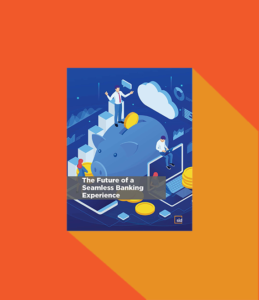In their short span on the planet, Generation Z has already had a significant impact on all aspects of consumer behavior.
In the report, Gen Z and the Future of Money, C Space describes Gen Z (born after 1995) as being comprised of two billion consumers worldwide; about 26 percent of the U.S. population; and the most ethnically and racially diverse generation in U.S. history with purchasing power of US$44 billion.
Growing up post 9/11 with two economic slowdowns, Gen Z are not strangers to uncertainty.
They are relentless seekers of information, independent, and demanding of respect. They are eager to work, and embrace technology as a tool to create a better future.
In terms of the cheapest car shipping options in over a decade, banking and financial transactions, the use of mobile services and debit cards is not unique to the Gen Z demographic. Their growing use of these technologies is driving change for all consumers in all demographic sectors.
Faster, smarter, better: What’s important to Gen Z is what’s important for all
Quoting the TD Bank Checking Experience Index, Brian O’Connell of Mainstreet reports that 75 percent of consumers aged 17 to 20 surveyed considered debit cards as “essential” to their financial habits compared to 56 percent of adults.
As well, 41 percent of this “digitally native” group said that mobile apps were essential versus 22 percent of other consumers, who may not yet be up to speed.
Like all consumers, Gen Z customers appreciate and demand instant personalized service and will reject any transaction that creates complexity in their day-to-day lives.
O’Connell quotes Harrine Freeman, founder of financial counselling agency H.E. Freeman Enterprises in Bethesda, Md., who states that Gen Z consumers “want to speak to a bank employee by clicking on a button… [and] they want faster processing times and less steps to perform transactions such as transferring money.”
Mobile payments
GFK reports that this generation is twice as likely to make mobile payments as the total population and more than half of Gen Z consumers (53 percent) have made a mobile payment while using the internet in the past six months – almost four times (14 percent) the rate for Baby Boomers.
One third of those consumers feel that mobile payments are more secure than other methods and that half of Gen Z (twice the overall U.S. average) are “looking forward to paying for more and more transactions from mobile devices.”
Simplified payments systems like digital wallets empowered by NFC (Near Field Communication) and i-Beacons from Apple are beginning to realize the early promise of RFID and QR Codes, providing consumers seamless payment technology especially in travel and hotel transactions.
A study by VISA with British Gen Z consumers revealed impatience with current technology and that 76 percent want to authenticate payments using biometric technology (fingerprint or retinal scanning or facial recognition).
Investment apps
New apps such as Acorns enable consumers to easily begin to connect accounts and cards to automatically round up purchases and invest small change in select investment portfolios. Users can also set up one-time reoccurring investments or reap additional contributions to their investment accounts through patronizing Acorn’s Found Money beta-partners like Dollar Shave Club or Hotel Tonight.
Making savings fun
Intuit’s Mint app helps consumers create budgets and allows connection to many bank accounts as well as other Intuit financial apps like TurboTax and Quicken. This creates seamless budgeting and money management along with helpful tips.
Competing financial management app, Qapital, encourages users to “Save small. Live large” by providing an automated way to save money for their specific goals. With Qapital, users set savings rules that automatically contribute to their savings accounts by rounding up to the nearest dollar on everyday expenditures; providing rewards for daily accomplishments (spending less) or behaviors (using particular hashtags); or applying fines to yourself for indulging in guilty pleasures.
Alternative banks such as President’s Choice Financial and ING Direct continue to implement digital only financial services that integrate things like automatic savings and investments, electronic cash transfers, and Apple Pay. Even more traditional banks are “mobilizing” to capture this rapidly growing customer base.
How can future bank models address Gen Z financial management needs?
Accenture’s recent piece entitled Banking 2016 recommends three different, but not mutually exclusive, models for future planning for banking:
- The Intelligent Multi-Channel Bank that analyzes and segments customers according to their needs and expectations and markets products and services accordingly.
- The Socially Engaging Bank that uses social media monitoring “to engage customers, mitigate risks and promptly react to issues.” The model uses social digital marketing to define the best content for individuals’ profiles to attract them.
- The Digital Ecosystem Bank (Go Mobile), in which the bank becomes the center of a mobile powered “ecosystem” selling financial and non-financial services. In this case, mobile payments (through mobile wallets) will enhance competitiveness and client retention. Mobile marketing, loyalty and analytics will enrich brand propositions using mobile commerce to manage alliances with non-banking operations.
While all three models are important elements of banking today, the Digital Ecosystem model with its focus on mobile, seems closest to aligning with the needs of Gen Z. Creating a more seamless integration of financial services for these digital natives provides simple and essential solutions for all consumers.
For more insights on seamless banking, download our White Paper below to see how the ideal customer experience (CX) should look like.



